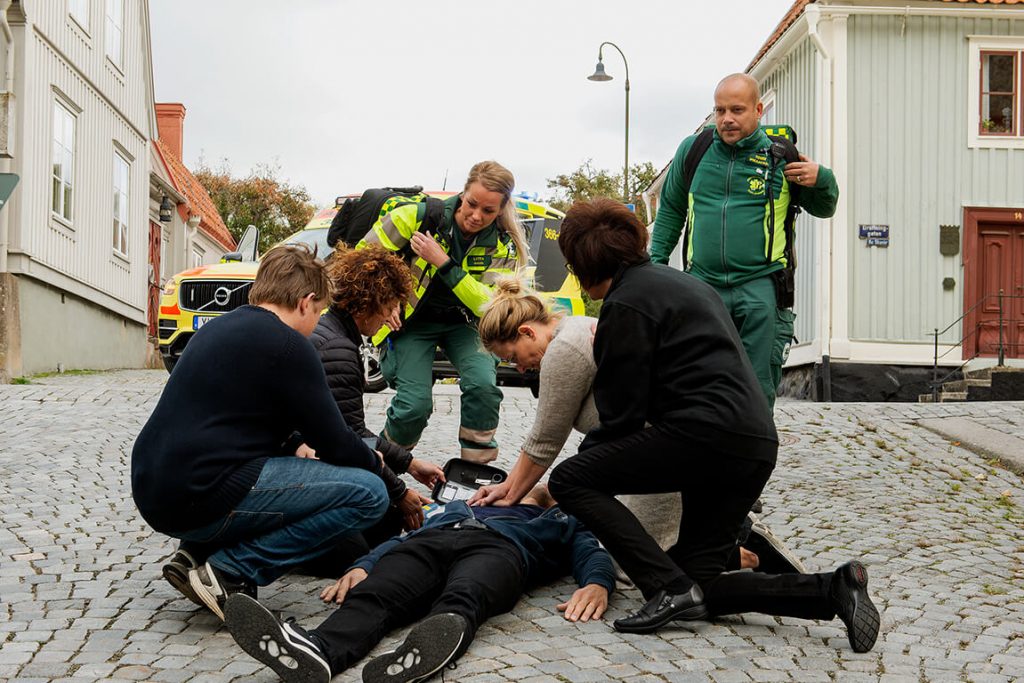SMS LIFEGUARDS SAVES LIFES

Every year around 10,000 Swedes die as a result of cardiac arrest, but the individual survial rate doubles or triples when immeidate cardio pulminary resusciation (CPR) is administered. With the support of digital technology, faster assistance is now available in the event of a sudden cardiac arrest outside a hospital. SMS Lifeguards has innovated the warning system by using CPR-trained volunteers to gain time before professional healthcare workers arrive. Through mobile positioning technology, people trained in CPR – SMS Lifeguards – are alerted on their mobile phones when a suspected cardiac arrest occurs within 500 metres.
Studies in the early 2000s in Stockholm showed that only three percent of those who experienced cardiac arrest survived. One day while sitting on a bus that had temporarily stopped, a professor at the Heart Stop Center came up with an idea to improve the survival rate after discovering, as the bus pulled away, that a woman was lying on the street and an ambulance had arrived. If this had happened today the professor would have received a text message directly from SOS Alarm and been able to help before the ambulance arrived.
Today around 18,000 people are registered as SMS Lifeguards, and with over three million Swedes trained in CPR, the potential to recruit even more is great. SMS Lifeguards represents a combination of medicine, social sciences, IT and volunteering that improves otherwise very low survival rates in the most acute conditions. More fundamentally, a key feature of SMS Lifeguards is that it is condi-tioned by social trust, which is at a high level in the Nordic countries, according to all available research. A research project involving Karolinska Institutet and Södersjukhuset, in collaboration with SOS Alarm and the Swedish Heart-Lung Foundation, developed SMS Lifeguards. Now run by a commercial enterprise, the system is currently in operation in various regions throughout Sweden. Ongoing research on the system and its impact on survival rates shows that SMS Lifeguards arrived before the ambulance more than 50% of the time. More research is needed, however, to establish how many lives have been saved thanks to SMS Lifeguards.
If you would like to reuse this solution, find more information on smslivraddare.se


